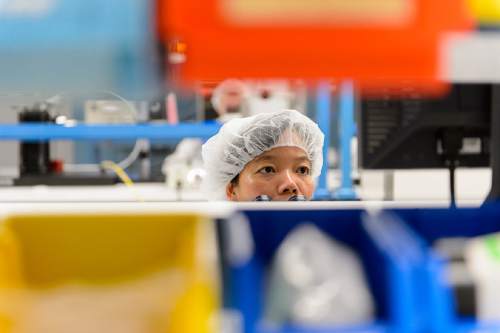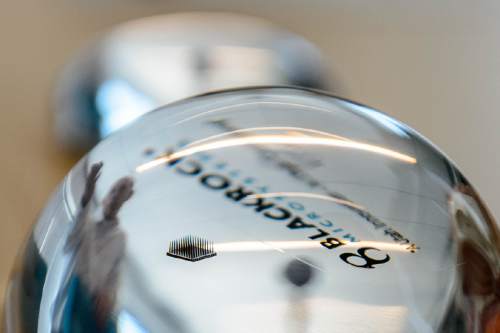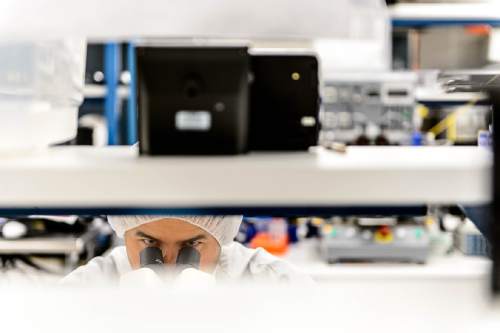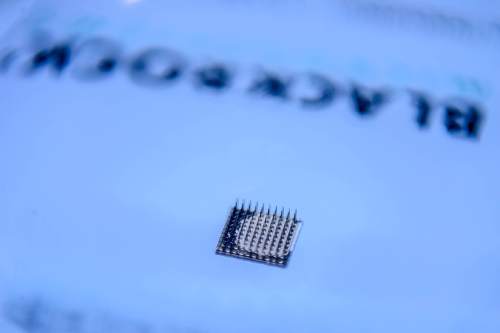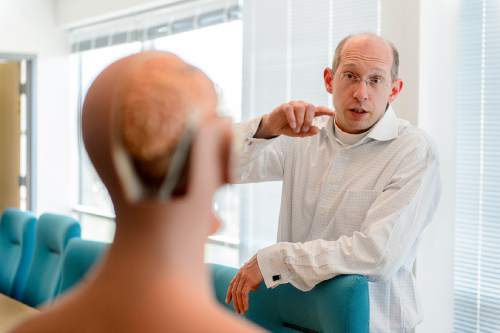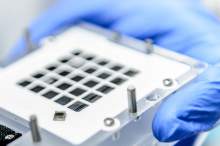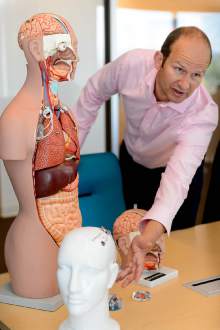This is an archived article that was published on sltrib.com in 2016, and information in the article may be outdated. It is provided only for personal research purposes and may not be reprinted.
Ian Burkhart cruised down the highway toward North Carolina's Outer Banks in 2010, chatting excitedly with his friends about the end of their freshman year at Ohio University.
The 19-year-old didn't give a second thought to his hands as they gripped the Jeep's steering wheel, or to his fingers and feet as they flipped turn signals and pressed down on the gas. He didn't know these simple actions would become impossible just hours later.
Diving into the water when they arrived in North Carolina, Burkhart crashed into a sandbar. His neck snapped, and his entire body went numb.
"I couldn't move at all," he said, "and that's when I knew, 'Oh, wow, I think I might be paralyzed.' "
He was. For years, Burkhart was unable to move anything below his elbows.
That is until 2014, when Burkhart opened and closed his hand for the first time in four years with the help of Utah-based technology.
That technology, known as the Utah Electrode Array, is a microchip composed of 100 needlelike electrodes implanted in the brain. When the electrodes are hooked up to an external computer, they can stimulate or record activity in the neurons.
Burkhart had the array implanted in his brain as part of a joint study with Ohio State University and Battelle, a Columbus, Ohio-based research and development nonprofit. Surgery to implant the array can take four hours.
When Burkhart broke his neck, communication between his brain and most of the rest of his body was cut off. But, with the help of the array and Battelle's technology, scientists can bypass the damaged spinal cord by examining the motion Burkhart thinks about and translating those signals into movement in his hand.
"It was exciting because it showed this technology is really working, and it's something to look forward to," Burkhart said.
With the help of the array, Burkhart now can pick up small objects and open and close his hand.
He can do this only in a laboratory, hooked up to equipment, for now. The technology is too bulky — and expensive — for a normal person to take home and use on a daily basis.
The array costs about $6,000, not including other necessary equipment.
Scientists are working on a smaller, wireless version that would allow someone to use the technology at home and, eventually, wherever they are.
"These need to be the size of the cochlear implants," said Florian Solzbacher, president and executive chairman of Blackrock Microsystems.
The array has other applications as well. Hospitals across the country also are using it to record activity in the brains of epilepsy patients.
In epilepsy patients, the array allows doctors and scientists to zoom in on the exact neurons that cause seizures, rather than a general, large area of the brain, said Andy Gotshalk, CEO of Blackrock Neuromed, a spinoff.
"With this technology," Gotshalk said, "we can now get precise information."
The goal is to eventually not just diagnose epilepsy with the array, but also treat it. Scientists hope that one day these arrays can help quadriplegics walk again, too.
Making the array mainstream, however, likely is at least 20 years away.
Despite this timeline, Burkhart said, he's incredibly encouraged by the progress scientists already have made.
"If you would have asked me even a year after I had my accident … I never would have thought we'd be at the point we are now," Burkhart said.
Twitter: @alexdstuckey


